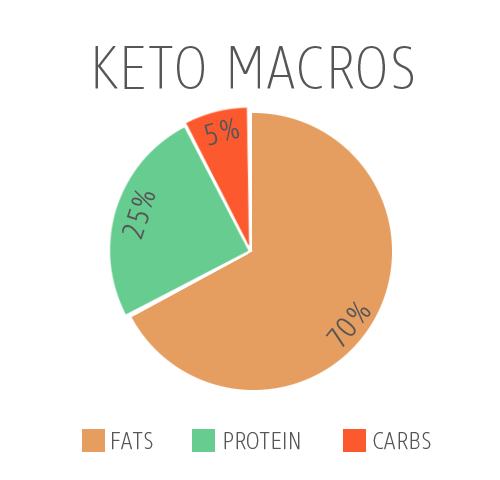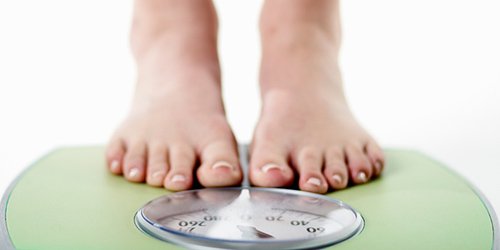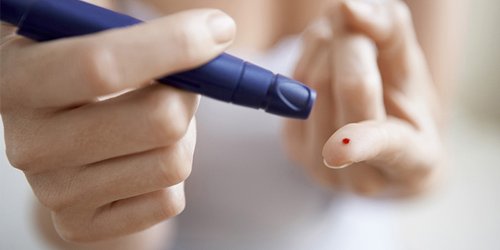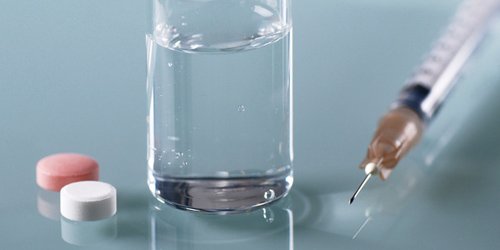Disclaimer: We Are Compensated For Any Service You May Purchase From This Blog
A keto diet is well known for being a low carb diet, where the body produces ketones in the liver to be used as energy. It’s referred to as many different names – ketogenic diet, low carb diet, low carb high fat (LCHF), etc.
When you eat something high in carbs, your body will produce glucose and insulin.
- Glucose is the easiest molecule for your body to convert and use as energy so that it will be chosen over any other energy source.
- Insulin is produced to process the glucose in your bloodstream by taking it around the body.
Since the glucose is being used as a primary energy, your fats are not needed and are therefore stored. Typically on a normal, higher carbohydrate diet, the body will use glucose as the main form of energy. By lowering the intake of carbs, the body is induced into a state known as ketosis.
Ketosis is a natural process the body initiates to help us survive when food intake is low. During this state, we produce ketones, which are produced from the breakdown of fats in the liver.
The end goal of a properly maintained keto diet is to force your body into this metabolic state. We don’t do this through starvation of calories but starvation of carbohydrates.
Our bodies are incredibly adaptive to what you put into it – when you overload it with fats and take away carbohydrates, it will begin to burn ketones as the primary energy source. Optimal ketone levels offer many health, weight loss, physical and mental performance benefits.
To start a keto diet, you will want to plan ahead. That means having a viable diet plan ready and waiting. What you eat depends on how fast you want to get into a ketogenic state (ketosis). The more restrictive you are on your carbohydrates (less than 25g net carbs per day), the faster you will enter ketosis.
What Do I Eat on a Keto Diet?
To start a keto diet, you will want to plan ahead. That means having a viable diet plan ready and waiting. What you eat depends on how fast you want to get into a ketogenic state (ketosis). The more restrictive you are on your carbohydrates (less than 25g net carbs per day), the faster you will enter ketosis.
You want to keep your carbohydrates limited, coming mostly from vegetables, nuts, and dairy. Don’t eat any refined carbohydrates such as wheat (bread, pasta, cereals), starch (potatoes, beans, legumes) or fruit. The small exceptions to this are avocado, star fruit, and berries which can be consumed in moderation.
Do Not Eat
- Grains – wheat, corn, rice, cereal, etc.
- Sugar – honey, agave, maple syrup, etc.
- Fruit – apples, bananas, oranges, etc.
- Tubers – potato, yams, etc.
Do Eat
- Meats – fish, beef, lamb, poultry, eggs, etc.
- Leafy Greens – spinach, kale, etc.
- Above ground vegetables – broccoli, cauliflower, etc.
- High Fat Dairy – hard cheeses, high fat cream, butter, etc.
- Nuts and seeds – macadamias, walnuts, sunflower seeds, etc.
- Avocado and berries – raspberries, blackberries, and other low glycemic impact berries
- Sweeteners – stevia, erythritol, monk fruit, and other low-carb sweeteners >
- Other fats – coconut oil, high-fat salad dressing, saturated fats, etc.
To see more specific advice on what (and what not) to eat, see our full keto food list >
Try to remember that keto is high in fat, moderate in protein, and very low in carbs. Your nutrient intake should be something around 70% fats, 25% protein, and 5% carbohydrate.
Typically, anywhere between 20-30g of net carbs is recommended for everyday dieting – but the lower you keep your carbohydrate intake and glucose levels, the better the overall results will be. If you’re doing keto for weight loss, it’s a good idea to keep track of both your total carbs and net carbs.
Protein should always be consumed as needed with fat filling in the remainder of the calories in your day.
You might be asking, “What’s a net carb?” It’s simple really! The net carbs are your total dietary carbohydrates, minus the total fiber. I recommend keeping total carbs below 35g and net carbs below 25g (ideally, below 20g).

If you’re finding yourself hungry throughout the day, you can snack on nuts, seeds, cheeses, or almond butter to curb your appetite (though snacking can slow progress in the long term). Sometimes we can confuse the want to snack with the need for a meal. If you’re in a rush and need a keto fast food option, there are some available.
Vegetables on a Ketogenic Diet
Dark green and leafy is always the best choice for vegetables. Most of your meals should be a protein with vegetables, and an extra side of fat. Chicken thighs basted in olive oil, with broccoli and cheese. Steak topped with a knob of butter, and a side of spinach sauteed in olive oil.
If you’re still confused about what a net carb is, don’t worry – I’ll explain further. Let’s say for example you want to eat some broccoli (1 cup) – one of my favorite keto vegetables out there.
- There are a total of 6g carbohydrates in 1 cup.
- There’s also 2g of fiber in 1 cup.
- So, we take the 6g (total carbs) and subtract the 2g (dietary fiber).
- This will give us our net carbs of 4g.
Here’s a list of the most common low carb vegetables. Though if you want a complete list, check out our guide on the best vegetables for a ketogenic diet >
| Vegetable | Amount | Net Carbs |
| Spinach (Raw) | 1/2 Cup | 0.1 |
| Bok Choi (Raw) | 1/2 Cup | 0.2 |
| Lettuce (Romaine) | 1/2 Cup | 0.2 |
| Cauliflower (Steamed) | 1/2 Cup | 0.9 |
| Cabbage (Green Raw) | 1/2 Cup | 1.1 |
| Cauliflower (Raw) | 1/2 Cup | 1.4 |
| Broccoli (Florets) | 1/2 Cup | 2 |
| Collard Greens | 1/2 Cup | 2 |
| Kale (Steamed) | 1/2 Cup | 2.1 |
| Green Beans (Steamed) | 1/2 Cup | 2.9 |
Note: Are you a vegetarian or vegan and want to go on a ketogenic diet? It’s still possible! Just keep in mind that the dietary restrictions can sometimes be a little bit intense. Make sure to plan ahead and prepare to aid your success. To help out, we’ve published articles (with 7-day meal plans included) for both the vegetarian ketogenic diet and the vegan ketogenic diet.
Weight Loss
The ketogenic diet essentially uses your body fat as an energy source – so there are obvious weight loss benefits. On keto, your insulin (the fat-storing hormone) levels drop greatly which turns your body into a fat-burning machine.
Scientifically, the ketogenic diet has shown better results compared to low-fat and high-carb diets; even in the long term. For more information, you can read our article on keto and weight loss >

Many people incorporate MCT Oil into their diet (it increases ketone production and fat loss) by drinking ketoproof coffee in the morning.
Control Blood Sugar
Keto naturally lowers blood sugar levels due to the type of foods you eat. Studies even show that the ketogenic diet is a more effective way to manage and prevent diabetes compared to low-calorie diets.
If you’re pre-diabetic or have Type II diabetes, you should seriously consider a ketogenic diet. We have many readers that have had success with their blood sugar control on keto. See more on keto and diabetes >

If you want to learn more, you can read about how keto can help control blood sugars.
Mental Focus
Many people use the ketogenic diet specifically for increased mental performance.
Ketones are a great source of fuel for the brain. When you lower carb intake, you avoid big spikes in blood sugar. Together, this can result in improved focus and concentration.
Studies show that an increased intake of fatty acids can have impacting benefits to our brain’s function.

To learn more, see our article on the benefits of a keto diet for the brain.
Increased Energy & Normalized Hunger
By giving your body a better and more reliable energy source, you will feel more energized during the day. Fats are shown to be the most effective molecule to burn as fuel.
On top of that, fat is naturally more satisfying and ends up leaving us in a satiated (“full”) state for longer.2 If you’re interested in the science behind it, you can read more about how keto and ketosis works.

Epilepsy
The ketogenic diet has been used since the early 1900’s to treat epilepsy successfully. It is still one of the most widely used therapies for children who have uncontrolled epilepsy today. Learn more about how keto can help with epilepsy.
One of the main benefits of the ketogenic diet and epilepsy is that it allows fewer medications to be used while still offering excellent control.

In the last few years, studies have also shown significant results in adults treated with keto as well.
Cholesterol & Blood Pressure
A keto diet has shown to improve triglyceride levels and cholesterol levels most associated with arterial buildup. More specifically low-carb, high-fat diets show a dramatic increase in HDL and a decrease in LDL particle concentration compared to low-fat diets.3 Read more on keto and cholesterol.
Many studies on ketogenic diets also show better improvement in blood pressure over other diets.

Some blood pressure issues are associated with excess weight, which is a bonus since keto tends to lead to weight loss. If you have high blood pressure or other blood pressure issues, click here to learn how keto can reduce blood pressure.
Insulin Resistance
Insulin resistance can lead to type II diabetes if left unmanaged. An abundant amount of research shows that a low carb, ketogenic diet can help people lower their insulin levels to healthy ranges. Read more on keto and insulin resistance.
Even if you’re athletic, you can benefit from insulin optimization on keto through eating foods high in omega-3 fatty acids.

Acne
It’s common to experience improvements in your skin when you switch to a keto diet.
Here’s one study that shows drops in lesions and skin inflammation when switching to a low-carb diet. Another study that shows a probable connection between high-carb eating and increased acne, so it’s likely that keto can help.

For acne, it may be beneficial to reduce dairy intake and follow a strict skin cleaning regimen. If you’re interested in starting a ketogenic diet for your skin, consider reading our article on keto and acne.
Some seniors simply cannot lose weight. It can be hard to implement a lifestyle change by yourself. If you are looking for help and support during your weight loss journey, we encourage you to contact Structure House. They are the best no-nonsense weight loss center for senior support.

